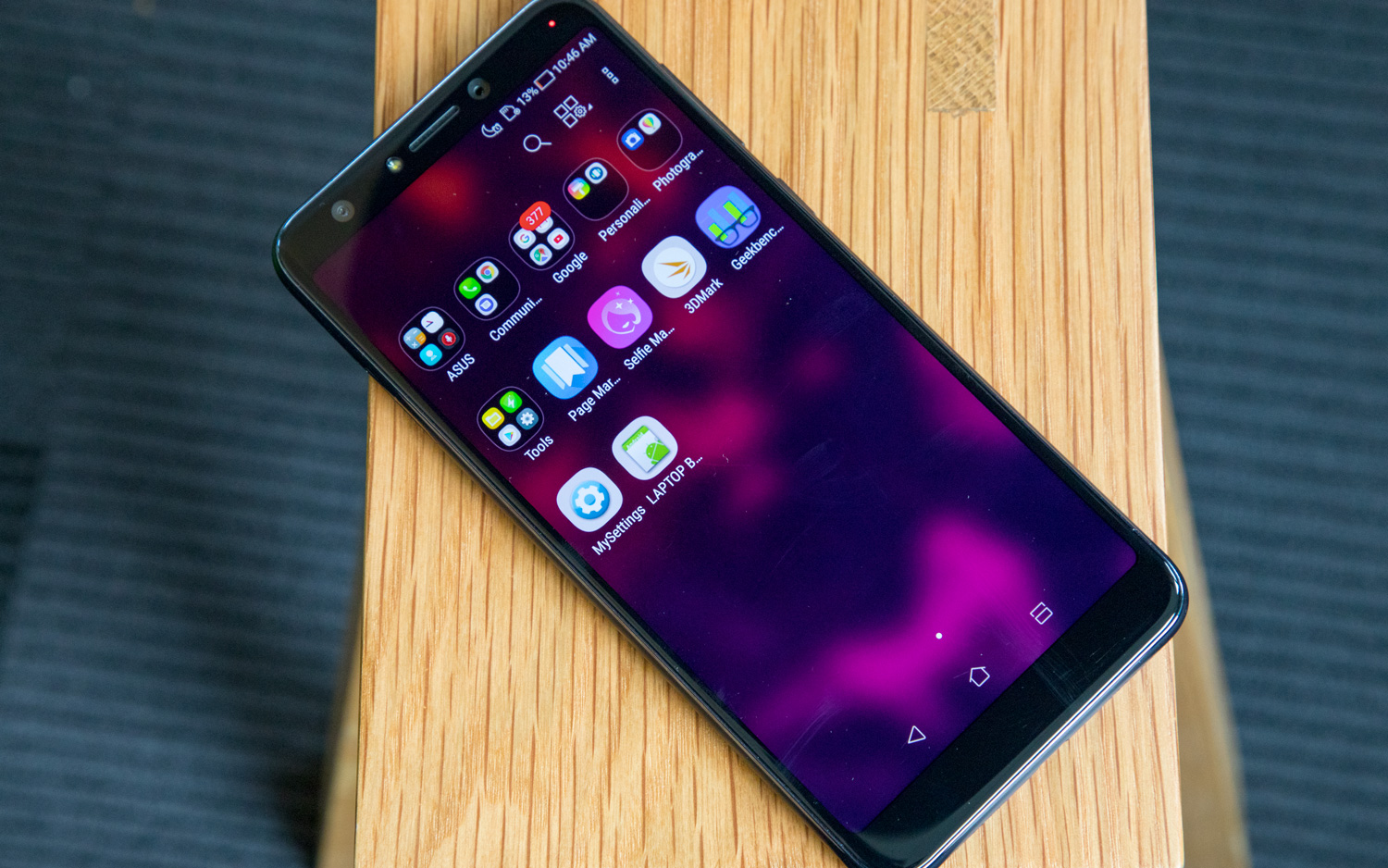Tom's Guide Verdict
Asus' latest midrange ZenFone packs four cameras and a powerful processor, but unpolished software keeps it from being our favorite handset under $300.
Pros
- +
Solid performance
- +
Good battery life
Cons
- -
Clunky, outdated software
- -
Slow charging over micro USB
- -
Hit-or-miss cameras
- -
Works only on GSM networks
Why you can trust Tom's Guide
Say what you will about Asus' phones, but you can't criticize the company for lacking conviction. Every year, the Taiwanese tech giant releases a massive range of handsets (it launched no fewer than eight in 2017 alone) typically distinguished by a flurry of vague superlatives, including "Deluxe," "Max," "Zoom" and the ever-mysterious "Laser."
However, 2018 could be the start of a new chapter for Asus' mobile division, as the company seems to have just three products in the pipeline for the fifth generation of ZenFones: the flagship ZenFone 5Z, the midrange ZenFone 5, and this — the entry-level, $299 ZenFone 5Q.
Bearing that in mind, it seems Asus has learned a bit of restraint — a virtue that too often goes undervalued in this industry. But beneath that sheen of a snappy, new name, the ZenFone 5Q feels a lot like its predecessors. Which is to say it's pretty fast and lasts long on a charge, but it's founded upon woefully outdated software and has average cameras that don't live up to the company's grandiose claims.
Asus ZenFone 5Q Specs
| Price | $299 |
| OS | Android 7.1.1 Oreo |
| Screen Size (Resolution) | 6-inch LCD (2160 x 1080) |
| CPU | Qualcomm Snapdragon 630 |
| RAM | 4GB |
| Storage | 64GB |
| microSD Slot | Yes, up to 2TB |
| Rear Camera | Dual: 16 MP (f/2.2); 8 MP wide-angle (f/2.4) |
| Front Camera | Dual: 20 MP (f/2.0); 8 MP wide-angle (f/2.4) |
| Battery Size | 3,300 mAh |
| Water Resistance | No |
| Size | 6.32 x 3.00 x 0.31 inches |
What We Like
Long battery life: The ZenFone 5Q's generously sized 3,300-mAh battery lasted 10 hours and 59 minutes on our test, where the device streamed websites until it ran out of juice. That's better than the 9:48 smartphone average, and not too far off from the $229 Asus ZenFone Max Plus' 11:25 runtime.
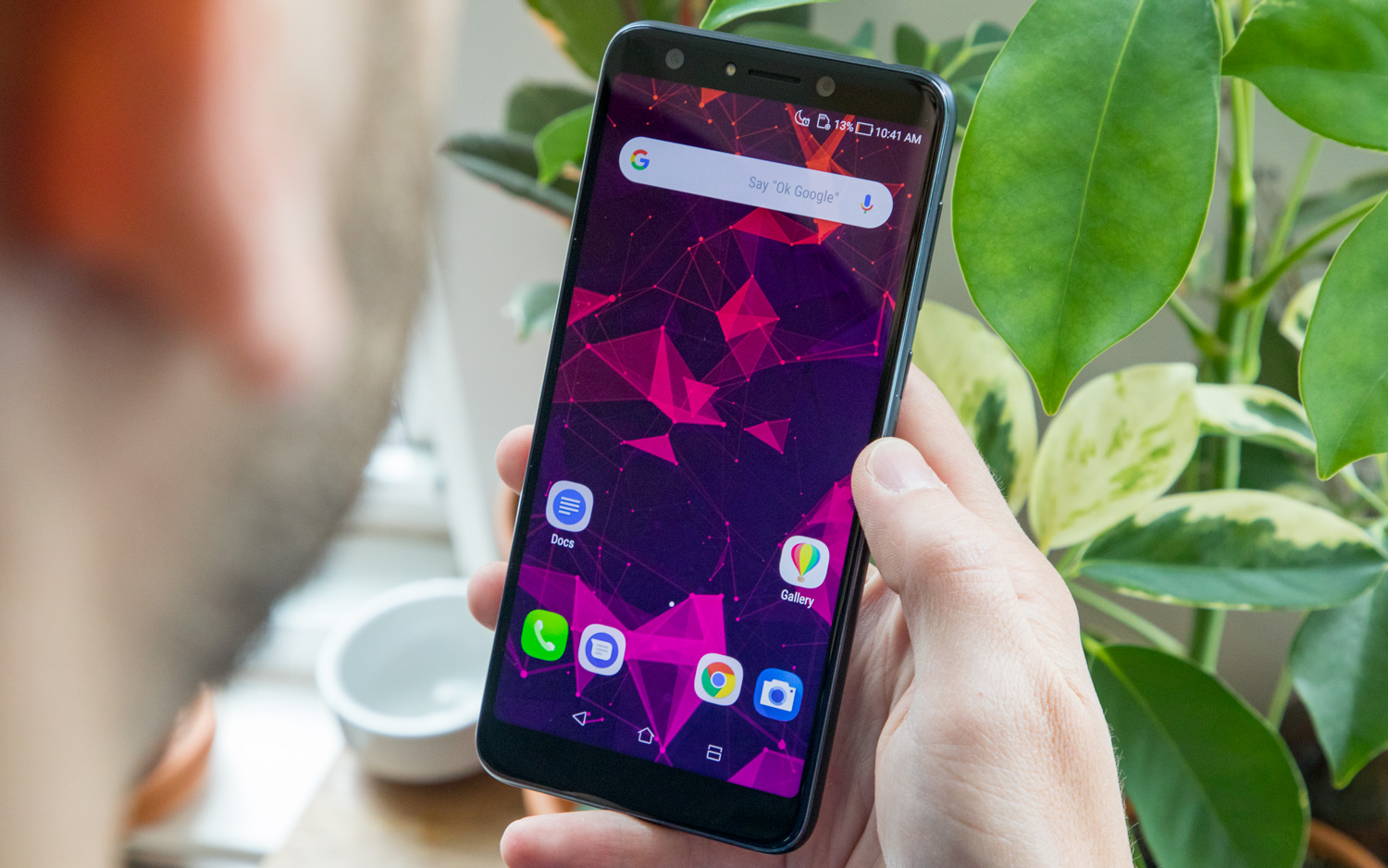
In fact, the ZenFone 5Q outperformed the Nokia 6.1 by 35 minutes and the Moto G6 by an hour and a half. There are budget handsets that will last longer, but usually not without concessions to performance.
Modern design: After producing a string of uninspired, cookie-cutter smartphones, Asus appears to have updated its template. The ZenFone 5Q isn't an eye-catching device by any means, but it's inoffensive and gets the job done. And unlike the company's previous efforts, it looks like a handset from this generation, with a large 18:9 display, respectably sized bezels and a mirrored glass back atop a sturdy polycarbonate frame.

The rear-mounted fingerprint sensor is a smidge high and has a small diameter, but it unlocks quickly. The ZenFone 5Q doesn't approach the Goldilocks size and shape of the $249 Moto G6, but like Motorola's popular budget offering, it has NFC for Google Pay transactions as well as a headphone jack.
Get instant access to breaking news, the hottest reviews, great deals and helpful tips.
Bright, 6-inch screen: So long as you're not expecting the vividity of a flagship display, the ZenFone 5Q's 6-inch, full-HD LCD screen compares solidly with those of rival devices, offering correct color reproduction, a wide gamut of hues and one of the brighter backlights we've seen in this category.
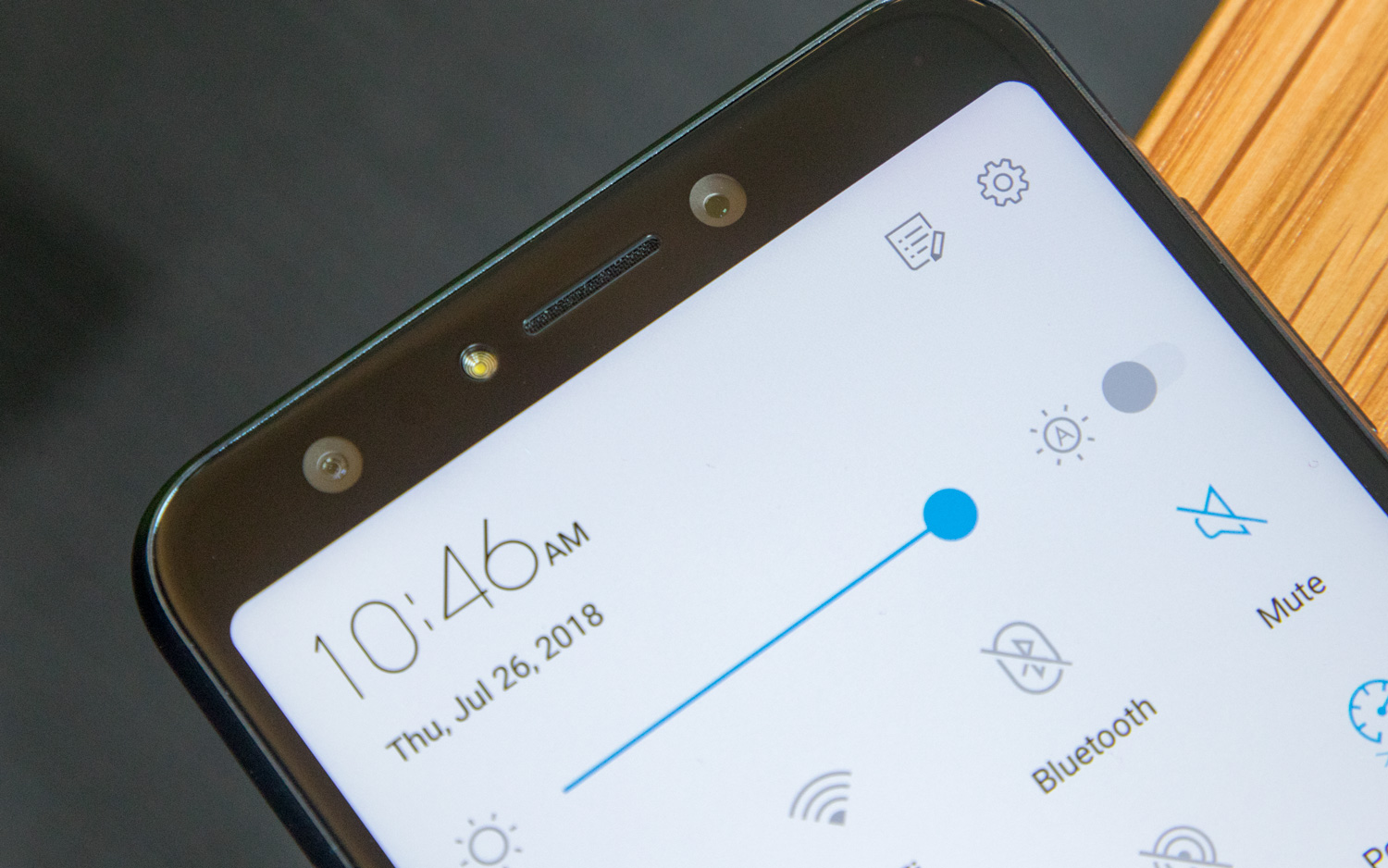
The ZenFone 5Q topped out at exactly 500 nits when we measured the display's peak brightness with our light meter. That's even better than other leaders in the sub-$300 segment, such as the $269 Nokia 6.1 (450 nits) and the Moto G6 (413 nits), and makes the ZenFone 5Q quite comfortable to use outdoors.
Asus' panel also notched a Delta-E result of 0.39, indicating accurate calibration. (Numbers closer to zero are better.) In terms of color range, the ZenFone 5Q's 137-percent swath of the sRGB color space was in between Motorola's (113) and Nokia's (142) best efforts.
Solid midrange performance: The ZenFone 5Q utilizes the same Snapdragon 630 chip found in the Nokia 6.1, but it combines it with 4GB of RAM rather than 3GB.
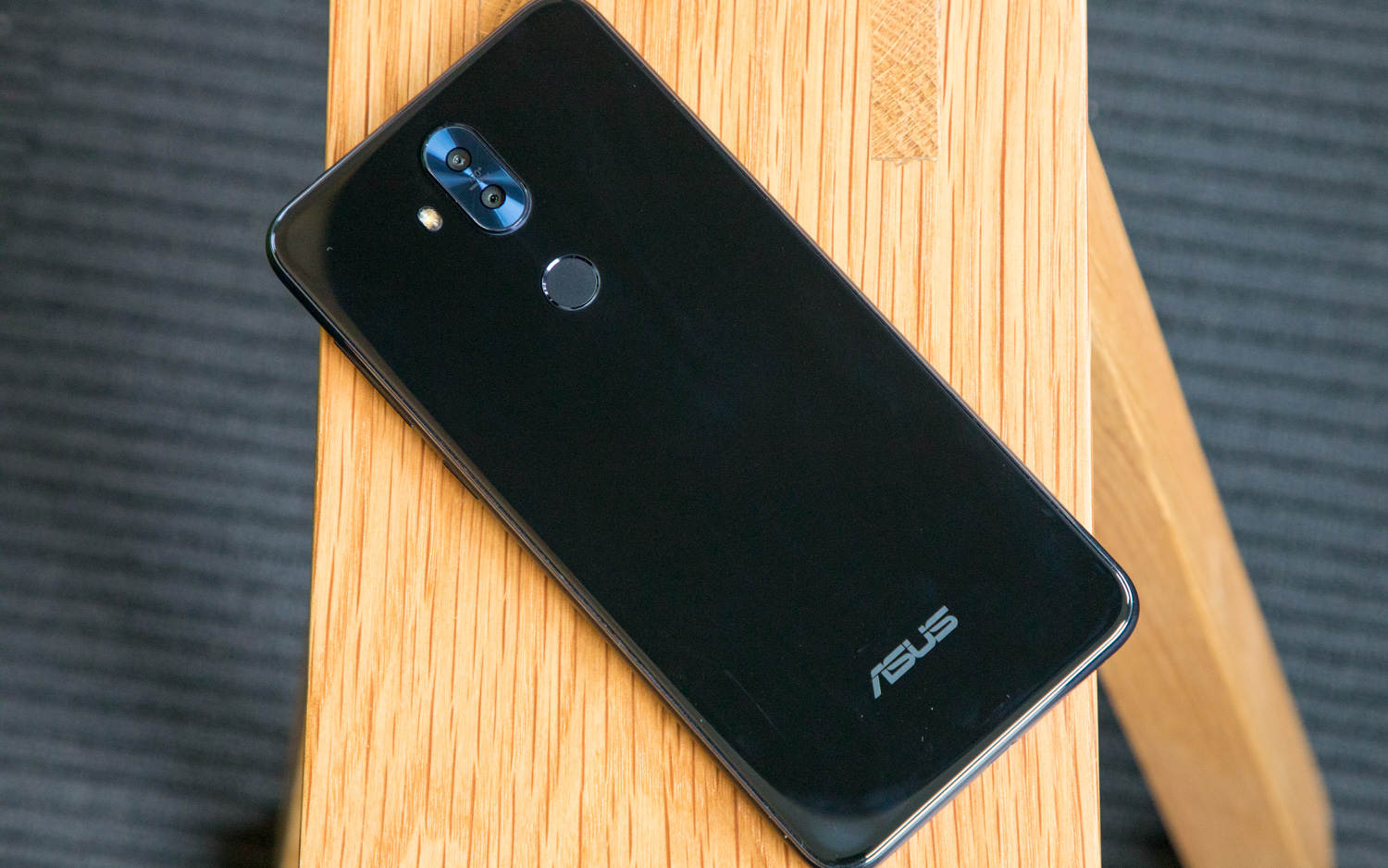
That's the best pairing of processor and memory you're likely to find for $300 or less, and it also makes the ZenFone 5Q one of the smoothest-performing handsets in its class. The extra gigabyte of RAM lends confidence to multitasking, and we like that Asus phone includes 64GB of built-in storage, which is more akin to what you get on a base-model iPhone 8 or Galaxy S9.
The ZenFone 5Q's 4GB of RAM lends confidence to multitasking, and we like that Asus included 64GB of built-in storage.
In Geekbench 4, a benchmark that measures overall performance, the ZenFone 5Q turned in a score of 4,108 — some 400 points higher than the Nokia 6.1, and functionally on a par with the Moto G6's 4,122.
MORE: Best Cheap Unlocked Smartphones
The ZenFone 5Q also impressed in 3DMark's Ice Storm Unlimited test, a graphics benchmark we use for midrange and low-end devices. There, Asus' handset totaled a very respectable 16,607, which is slightly behind the Nokia 6.1's 16,847. That's adequate enough to play some higher-end games like PUBG Mobile on moderate settings, which isn't too shabby for a $300 device.
What We Don't Like
micro USB in 2018: The ZenFone 5Q supports micro USB instead of the newer, faster USB Type-C format and, as a result, doesn't feature rapid charging. That means it takes quite a while to top up that big battery with the included adapter. In a half hour, the device reached just 34 percent in our testing.

And good luck if you plan on using a third-party charger you might have lying around. The ZenFone 5Q took 3 whole hours to go from empty to full with an old Sony micro USB charger I still had from my days of using an Xperia XZ2 Compact.
The other issue with having such an old port is that newer accessories won't work with it. That's going to be a problem if you happen to have a pair of USB-C headphones you really like, for example.
Meh cameras: Much like HTC did with its U12+, Asus has opted for dual cameras on both the front and rear of the ZenFone 5Q. Unfortunately, though, more lenses don't always lead to better photos.

On the back, there's a primary 16-megapixel sensor with an f/2.2 lens mated to an 8-MP, f/2.4 wide-angle camera for landscapes and Portrait Mode. The front has an even sharper 20-MP sensor with a larger f/2.0 aperture, but it's paired with the same 8-MP secondary sensor and its wider field of view.
Shallow depth-of-field portraits are in vogue right now, but you'd be much better served by ignoring the ZenFone 5Q's Portrait Mode.
The inclusion of wide-angle lenses on the front and back makes the ZenFone 5Q suitable for capturing the full scale of your surroundings as well as snapping a group selfie. But the phone's cameras produce mixed results, with blown-out highlights, dim exposure and blurry details the farther you zoom in.
The picturesque scene above, taken at a racetrack on a perfect summer day, exemplifies the ZenFone 5Q's strengths as well as its shortcomings. Asus' offering is sharper than that of the Nokia 6.1, with more detail preserved in the shadowy trees to the left. However, things get considerably fuzzier in the distance, and there's significant distortion around the perimeter of the frame that Nokia's rendition avoids. Plus, the ZenFone 5Q paints a noisy, grainy, gray sky, and strangely, the greens are a little too warm for what the situation called for.
Portraits weren't the ZenFone 5Q's bag, either, as evidenced by the dark example above. Some users may appreciate the addition of a Portrait Mode, but Asus' implementation is incapable of accurately separating the foreground from the background. The smoothing is overly aggressive too, lending the effect of a bad Photoshop job.
Before we get into the results from the front-facing cameras, you should know that Asus is very, very serious about selfies. The ZenFone 5Q even includes an app called Selfie Master, which offers an assortment of dials to slim your cheeks, enlarge your eyes and, rather problematically, whiten your skin. I struggled to get Selfie Master to make me look like anything other than an alien, so I switched it off.
In doing so, I found that, much like its rear cameras, the ZenFone 5Q's front cameras favor dramatic contrast and boosted hues. There's no question Asus' shooters do more with indoor lighting in the example above; it's surprisingly well exposed. But the lighting is a bit uneven and looks unnatural, and the color of my hair is way too light. If you prefer more stylized selfies, though, you may like what you see.
Dated Android OS: We're coming up on the anniversary of Android 8.0 Oreo's debut last year, and yet the ZenFone 5Q makes do with Android 7.1.1 Nougat. That's indefensible, but perhaps it wouldn't sting quite as much if Asus' ZenUI skin weren't the mess that it is.
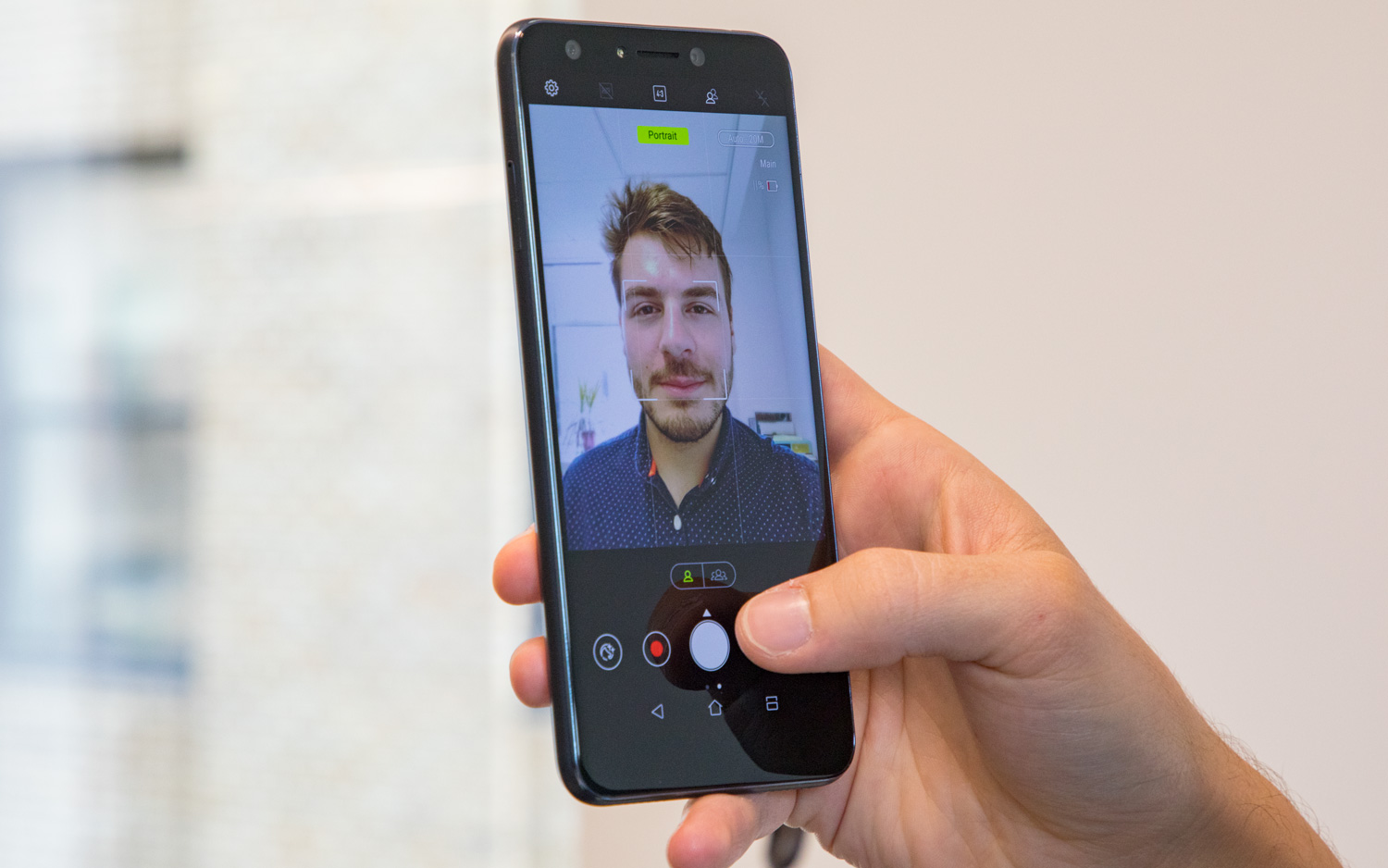
ZenUI trades on every bad habit of Android phone makers desperate to differentiate their products with flimsy extra features and gaudy animations at the expense of sensible design. Take, for example, the phone's Boost function, which frees up memory to improve performance. It's a glorified "clear all" button, which Android really doesn't need because it's pretty good at managing resources on its own.
That's not unusual among third-party Android front ends. But then Asus went ahead and added another, even more aggressive Super Boost mode that actively prevents background processes of any kind on a wide swath of apps by default — including ones you may actually need to run discreetly, like Chrome.
Asus doesn't seem to want to, or know how to, reject bad software ideas.
It's pretty irresponsible to encourage users to switch on a mode that stops software from working properly, and yet Asus went ahead and did it anyway. There's also an optional High Performance profile (for those special occasions when you want your phone to be fast) and a flurry of obtuse behaviors, like brightness that constantly changes depending on what's on-screen, and a read-it-later app called Page Marker that gobbles up articles and spits them out in unintelligible CSS.
MORE: Best Android Phones - Top Rated Smartphones You Can Buy ...
Should the 5Q eventually see that sorely needed Oreo update that Asus has teased for later in the year, it would be refreshing to see the bloat scaled back.
Price and Availability
The ZenFone 5Q retails for $299 and comes in one hardware configuration with 64GB of storage and 4GB of RAM. Two colors are on offer: black (which is really more of a dark indigo) and white. The rest of the world gets a red variant, but that one is skipping the United States. The ZenFone 5Q works on GSM networks like those of AT&T and T-Mobile, but you can't use it on CDMA networks like Sprint's and Verizon's.
Bottom Line
With the ZenFone 5Q, Asus has produced yet another reasonable proposition for budget buyers, with speedy performance for the price and a long-lasting (albeit slow-charging) battery. And once again, it's hampered by a laundry list of features that look good on paper but mean almost nothing in the real world.
The photography suite sounds enticing, with its four lenses, wide-angle perspectives and plethora of shooting modes, but the photos don't look noticeably better than the competition's. Even worse, the ZenFone 5Q continues Asus' disregard for software. Android Nougat is ancient, and ZenUI only makes things worse.
For all the ways the ZenFone 5Q tries to grab your attention, it's really just a fine budget phone. But it's not very polished, nor is it the cheapest, nor does it work on the widest selection of networks. And that makes it hard to recommend in light of more well-rounded options like the Moto G6, Nokia 6.1 or even the Honor 7X.
Credit: Tom's Guide
Adam Ismail is a staff writer at Jalopnik and previously worked on Tom's Guide covering smartphones, car tech and gaming. His love for all things mobile began with the original Motorola Droid; since then he’s owned a variety of Android and iOS-powered handsets, refusing to stay loyal to one platform. His work has also appeared on Digital Trends and GTPlanet. When he’s not fiddling with the latest devices, he’s at an indie pop show, recording a podcast or playing Sega Dreamcast.
